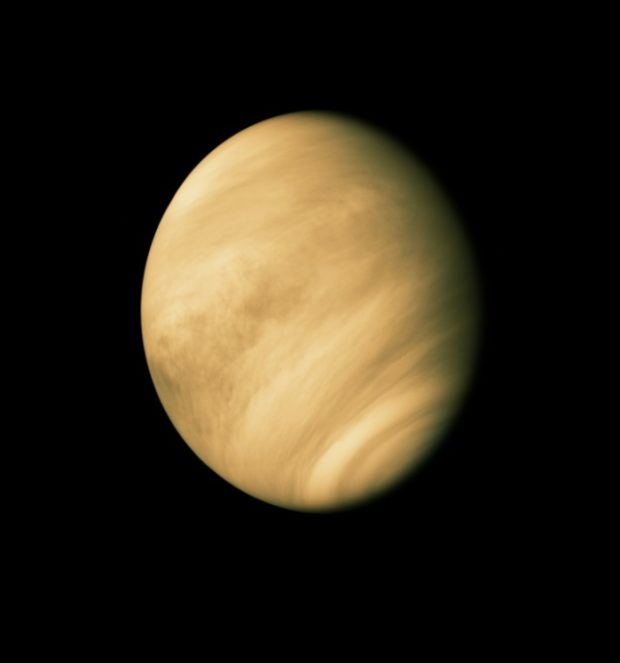
Conditions on Venus are often described as “hellish” with daytime temperatures hot enough to melt lead and an atmosphere comprised almost entirely of carbon dioxide. Image: Michael Benson – NASA/JPL/AFP/
The atmosphere of Venus contains a gas that, on Earth, can be attributed to living organisms, scientists said Monday, Sept. 14.
It is a discovery the head of the National Aeronautics and Space Administration (NASA) called “the most significant development yet” in the hunt for extraterrestrial life.
Conditions on our planetary neighbor are often described as hellish with daytime temperatures hot enough to melt lead and an atmosphere comprised almost entirely of carbon dioxide.
However, a team of experts detected traces of phosphine, a flammable gas that on Earth often occurs from the breakdown of organic matter. They used telescopes in Hawaii and Chile’s Atacama Desert to observe Venus’s upper cloud deck, around 60 kilometers (45 miles) from the surface.
Writing in Nature Astronomy, the team stressed the presence of phosphine did not prove the presence of life on Venus. But, as the clouds swirling about its broiling surface are highly acidic and, therefore, destroy phosphine very quickly, the research did show that something was creating it anew.
The researchers conducted several modeling calculations in a bid to explain the new phosphine production. They concluded that their research provided evidence “for anomalous and unexplained chemistry” on Venus.
Lead author Jane Greaves, from Cardiff University’s School of Physics and Astronomy, told the Agence France-Presse that the presence of phosphine alone was not proof of life on Earth’s next door neighbor.
“I don’t think we can say that — even if a planet was abundant in phosphorus, it might lack something else important to life —some other element, or conditions might be too hot, too dry,” she said.
Greaves added that it was the first time phosphine had been found on a rocky planet other than Earth.
The breakthrough was hailed by NASA administrator Jim Bridenstine, who tweeted, “it’s time to prioritize Venus.”
“Life on Venus? The discovery of phosphine, a byproduct of anaerobic biology, is the most significant development yet in building the case for life off Earth,” he wrote.
The bulk of current efforts to look for past extraterrestrial life focuses on Mars, which is known to have once contained all the necessary ingredients to support carbon-based organisms. The United States and China recently sent rovers to the Red Planet, while the United Arab Emirates sent an atmospheric probe.
‘Exciting’
Reacting to the study, Alan Duffy, an astronomer from Swinburne University and lead scientist of The Royal Institution of Australia, said that while it was tempting to believe that the phosphine was produced by lifeforms, “we have to rule out all possible other non-biological means of producing it.”
He called the finding “one of the most exciting signs of the possible presence of life beyond Earth I have ever seen.”
Thomas Zurbuchen, associate administrator of NASA’s Science Mission Directorate, which has conducted several flybys of Venus, called Monday’s research “intriguing.”
“As with an increasing number of planetary bodies, Venus is proving to be an exciting place of discovery, though it had not been a significant part of the search for life,” he tweeted.
He added that the planet was the focus of two out of four of NASA’s next four candidate missions under its Discovery Program, as well as Europe’s proposed EnVision mission, in which NASA is a partner.
Venus, which rotates in the opposite direction to Earth and where a day lasts 243 times longer, is a subject of intense interest among astronomers.
It is so close and of such similar size to our home planet that some experts believe it serves as a warning of the dangers of runaway climate change. Previous studies have unearthed tantalizing clues suggesting Venus has active volcanoes, including signs of recent lava flows. CC
RELATED STORIES:
Blue planet: Study proposes new origin theory for Earth’s water